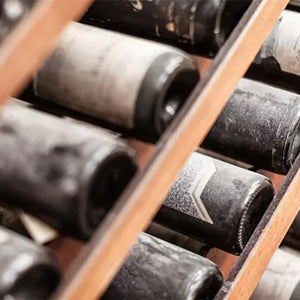
Everything You Need to Know About Sweet Wine (and How to Pair It with Food!)
As with any style of wine, knowing how it's made, where it comes from, and what it goes best with it is key. Dive into everything you need to know about sweet wine via our explainer below, just in time for the biggest food and wine pairing day of the year!
What Is Sweet Wine?
By definition, sweet wine is wine with the presence of residual sugar. While many wine drinkers tend to use the word sweet when tasting dry wines, they often mean fruit-forward or juicy. Sweet wine technically must show a presence of residual sugar to be classified as such.
How Is Sweet Wine Made?
Sweet wines are made in a variety of ways, though the most common are through late-harvesting grapes, botrytis, straw or mat drying, and fortification. First, late harvest wines are produced exactly how they sound. Fruit is left longer on the vine so as to allow it to ripen further, which creates more sugars in the berries. In some cases, late-harvested fruit will develop botrytis, otherwise known as noble rot. This rare yet coveted rot is most commonly found in Sauternes and sucks the water from grapes, therefore dehydrating them and concentrating their sugars.
Straw or mat drying grapes is a practice commonly used across Italy, particularly in the Veneto and Tuscany regions of the country. Fruit is left to raisinate on straw mats or in special rooms while hanging for a number of months, which dehydrates them and concentrates their sugars. The juice then used to create the wine in question is much sweeter due to the lack of water.
What Is Fortified Wine?
Fortified wines are produced by adding neutral distillate to an already fermenting wine. This addition kills yeasts, which in turn, halts fermentation and leaves a high amount of residual sugar in the wine. However, due to the distillate’s presence, the alcohol level of these wines is boosted to around 18% to 22%. The most popular styles of fortified wines are Port, Sherry, Madeira, and Marsala.
Where Is Sweet Wine Made?
Sweet wines are made all over the world, though certain regions are more synonymous with specific styles. Fortified wine production is popular in Portugal (Port, Madeira), Spain (Jerez / Sherry), and Sicily (Marsala), whereas late harvest and botrytis-affected wines are most commonly produced in Germany and France’s Loire Valley / Bordeaux regions. Straw and mat drying are popular across Italy, and in regions where the weather is cold enough—think Germany and Canada—ice wine is also a popular style (this method requires hand-harvesting frozen grapes at night, cracking the ice off of them, and vinifying the small amounts of concentrated juice inside!)
What Are the Key Rules to Pairing Sweet Wine with Dessert?
The most important rule of thumb when pairing sweet wine with dessert is that what’s in the glass should always be sweeter than what’s on the plate—meaning that the wine should always be sweeter than the dessert. While less strict, another solid rule to follow is match the color of sweet wine with dessert; that’s to say that lighter-hued sweet wines will generally pair better with pies, pastry doughs, and fruit, whereas darker sweet wines will often pair better with Ruby and Tawny ports, fortified wines, and more.
Can You Pair Savory Food with Sweet Wine?
Definitely! Sweet wine and savory food pairings offer some of the most exquisite gastronomical marriages on the planet. For quintessential go-tos that promise to blow your mind, reach for a sweet white wine (Sauternes, late-harvest Chenin Blanc, or Vin Santo) and pair it with blue cheese or foie gras – you’ll thank us later!
What Are Some of the Top Sweet Wine Pairings for Thanksgiving?
Late-harvest Chenin from the Loire Valley and Sauternes / Barsac from Bordeaux are no-brainers with a variety of fruit pies and tartlets, whereas Tawny Ports and sweet Sherries are perfect with chocolate-based desserts. For pumpkin pie, reach for anything – you really can’t go wrong here!
From our Wired for Wine family to yours, we wish you a happy and healthy holiday season!




